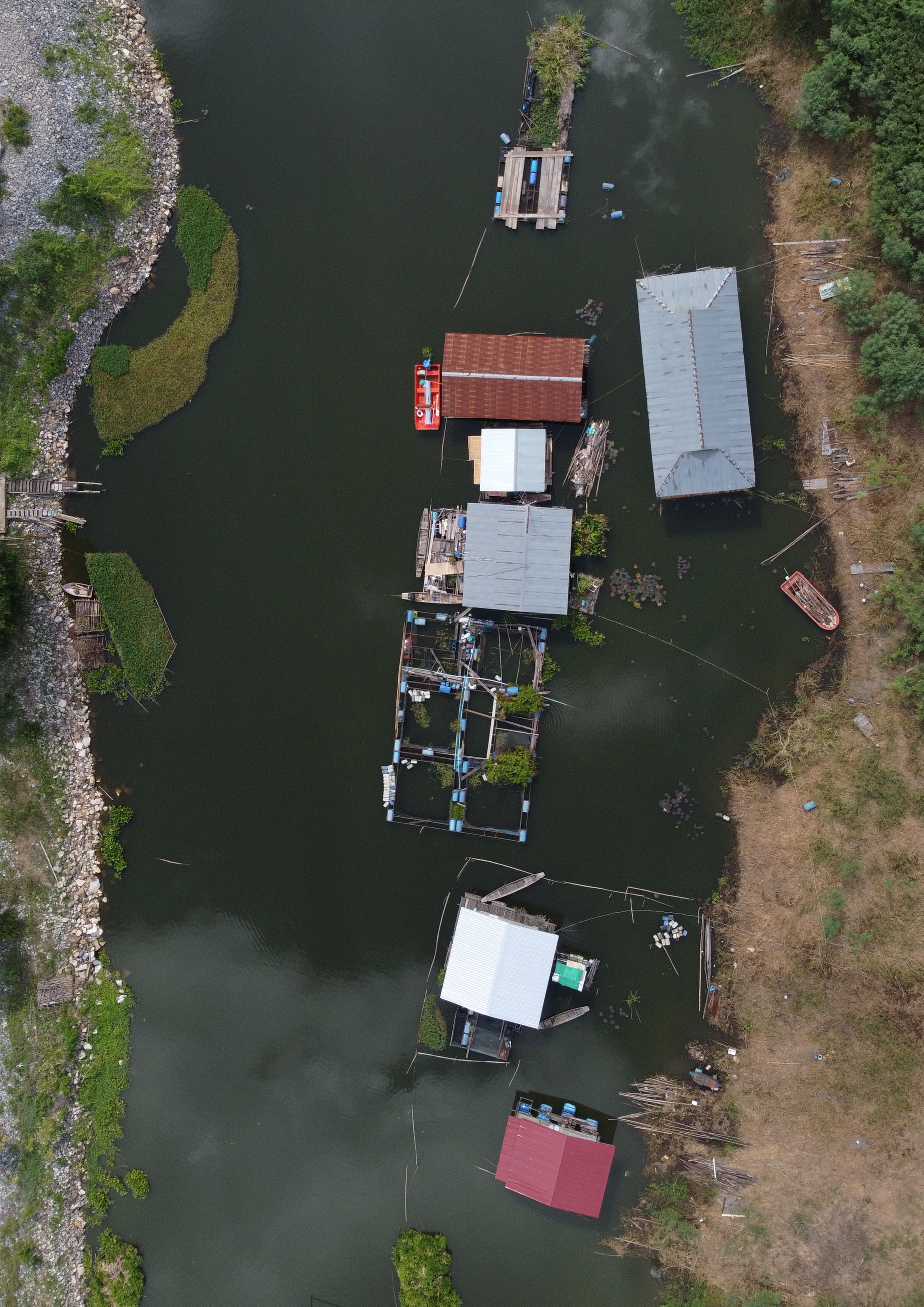Identity of Sakae Krang raft community, Uthai Thani province
Keywords:
architectural identity, Sakae Krang raft house, community, Uthai ThaniAbstract
This paper aims to explain what factors are employed to define the identity of Sakae Krang community as times change. This study employs various data collection methods such as drawing, recording, photographs, mapping, interviews, group discussions and participant observation. However, this study focuses on collective identity rather than individual identity. Raft houses and environmental management express a process of the collective consciousness of the rafters that shows the similarities and differences of the group’s habitat. Therefore, the study focuses on examining the house forms and behaviours to explain the characteristics of communities, both physical, social and cultural aspects. This study will concentrate on theoretical discussions rather than architectural styles linked to the situations they are facing. It can be concluded that the identity of the Sakae Krang community is never completed and is always in the process of creating a new or modified one. Because the identity of the Sakae Krang community is a social relationship that is either constantly link to something or it is an ongoing process and always allows for new forms of change.
References
Abel, C. (2000). Architecture and identity: responses to cultural and technological change. Oxford: Architectural Press.
Akbar, J. (1995). Machineries of creativity in islamic architecture. In Alhrmi, M. (Ed.). The dilemma of theory and application in traditional architecture. (pp.163–194). Bahrain: Bahraini Engineers Syndicate.
Belanche, D., Casaló, L. & Flavián, C. (2017). Understanding the cognitive, affective and evaluative components of social urban identity: Determinants, measurement, and practical consequences. Journal of Environmental Psychology, 50, 138–153.
Belanche, D., Casaló, L.V. & Rubio, M.A. (2021). Local place identity: a comparison between residents of rural and urban communities. Journal of Rural Studies, 82(1), 242–252.
Bora, I. & Voiculescu, M. (2021). Resettlement, intergenerational memory, place attachment, and place identity in Rosia Jiu coal mine - Gorj County, Romania. Journal of Rural Studies, 86, 578–586.
Castells, M. (2004). The power of identity. Oxford: Blackwell.
Chadirji, R. (1984). The role of design in the expression of national identity. In Sevcenko, M. (Ed.). Continuity and change: design strategies for large-scale urban development. (pp.108–110). The Aga Khan program for Islamic Architecture at Harvard University. Cambridge: MIT Press.
Cohen, R.A. & Marsh J.L. (2002). Ricoeur as another: the ethics of subjectivity. New York: State University of New York Press.
Dovey, K. (2008). Framing places: mediating power in built form (2nd Eds.). London: Routledge.
Dutton, T.A. & Mann L.H. (1996). Reconstructing architecture: critical discourses and social practices. London: University of Minnesota Press.
Findley, L. (2005). Building change: architecture, politics and cultural agency. London: Routledge.
Ghirardo, D. (1991). Out of site: a social criticism of architecture. Seattle: Bay Press.
Goldsteen, J.B. & Elliott, C.D. (1994). Designing America: creating urban identity. New York: Van Nostrand Reinhold.
Hall, S. (2000). Old and new identities, old and new ethnicities. In King, A.D. (Eds.). Culture, globalization and the world-system: contemporary conditions for the representation of identity. (pp.41–68). Minneapolis: University of Minnesota Press.
Hogg, M.A. & Abrams, D. (1999). Social Identity and social cognition: historical background and current trends. In Abrams, D. & Hogg, M. (Eds.). Social identity and social cognition. (pp.1–25). Oxford: Blackwell.
Jackson, A. (1970). The politics of architecture: a history of modern architecture in Britain. London: Architectural Press.
Landry, C. (2006). The art of city-making. London: Earthscan.
Lawrence, R.J. (2006). Learning from the vernacular: basic principles for sustaining human habitats. In Asquith, L. & Vellinga, M. (Eds.). Vernacular architecture in the twenty-first century: theory, education and practice. (pp.110–127). New York: Taylor & Francis.
Lewicka, M. (2008). Place attachment, place identity, and place memory: restoring the forgotten city past. Journal of Environmental Psychology, 28(3), 209–231.
Lewicka, M. (2011). Place attachment: how far have we come in the last 40 years?. Journal of Environmental Psychology, 31(3), 207–230.
Mandal, A. (2016). Size and type of places, geographical region, satisfaction with life, age, sex and place attachment. Polish Psychological Bulletin, 47(1), 159–169.
Massey, D. (1994). Space, place, and gender. Minneapolis: University of Minnesota Press
McNeill, D. & Tewdwr-Jones, M. (2003). Architecture, banal nationalism and re-territorialization. International Journal of Urban and Regional Research, 27(3), 738–743.
Panin, O. (2010). Panya sangsan nai sathapattayakam phuenthin. (In Thai) [Creative intelligence in vernacular architecture]. Bangkok: Plus Press
Peterkova, J. (2003). European cultural identity: the role of cultural heritage in the process of mutual communication and creation of consciousness of common cultural identity. Retrieved June 11, 2021 from http://www.kakanien-revisited.at/beitr/fallstudie/JPeterkova1.pdf.
Proshansky, H.M. (1978). The city and self-identity. Environment and Behavior, 10(2), 147–169.
Saliya, Y. (1986). Notes on architectural identity in the cultural context. In Khan, H. (Ed.). MIMAR 19: architecture in development. (pp.2–3). Singapore: Concept Media Ltd.
Sarup, M. (1996). Identity, culture and the postmodern world. Edinburgh: Edinburgh University Press.
Scannell, L. & Gifford, R. (2017). The experienced psychological benefits of place attachment. Journal of Environmental Psychology, 51, 256–269.
Tilley, C.Y. (1994). A phenomenology of landscape: places, paths and monuments. Oxford: Berg.

Downloads
Published
Issue
Section
License
Copyright (c) 2022 Faculty of Architecture, Chiang Mai University

This work is licensed under a Creative Commons Attribution-NonCommercial-NoDerivatives 4.0 International License.


